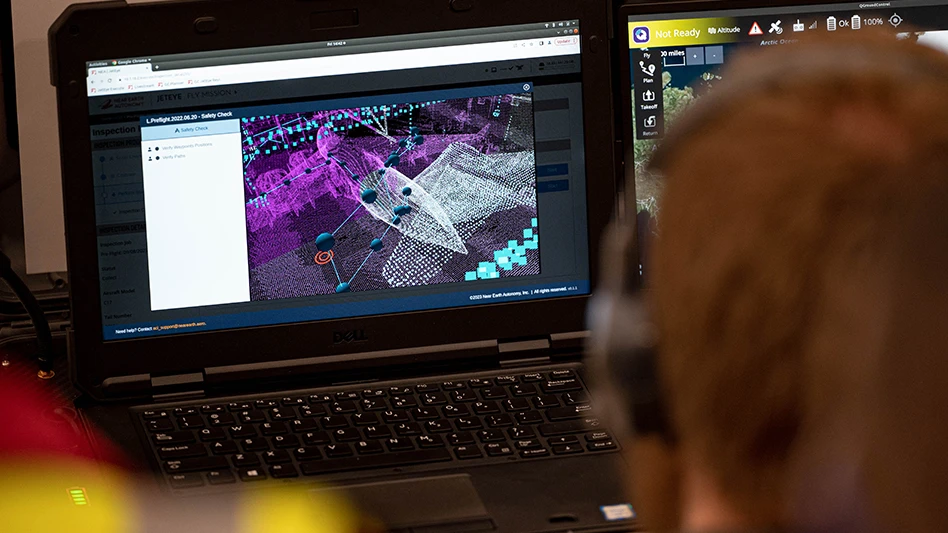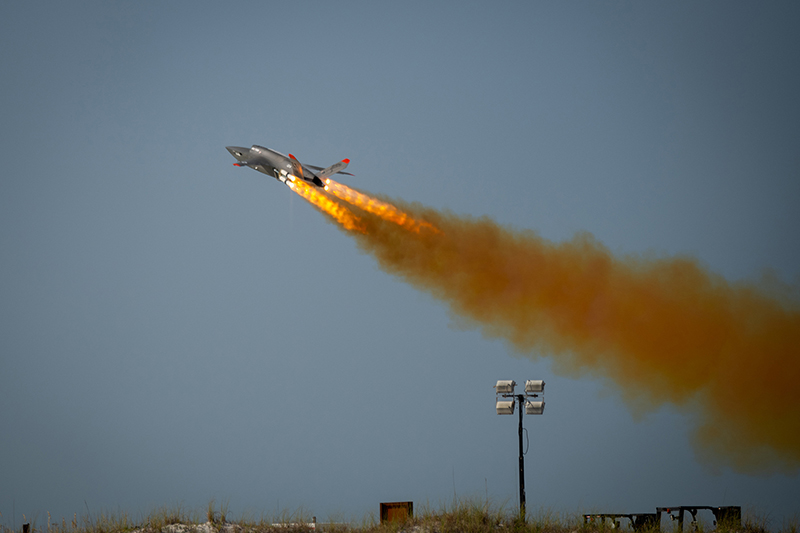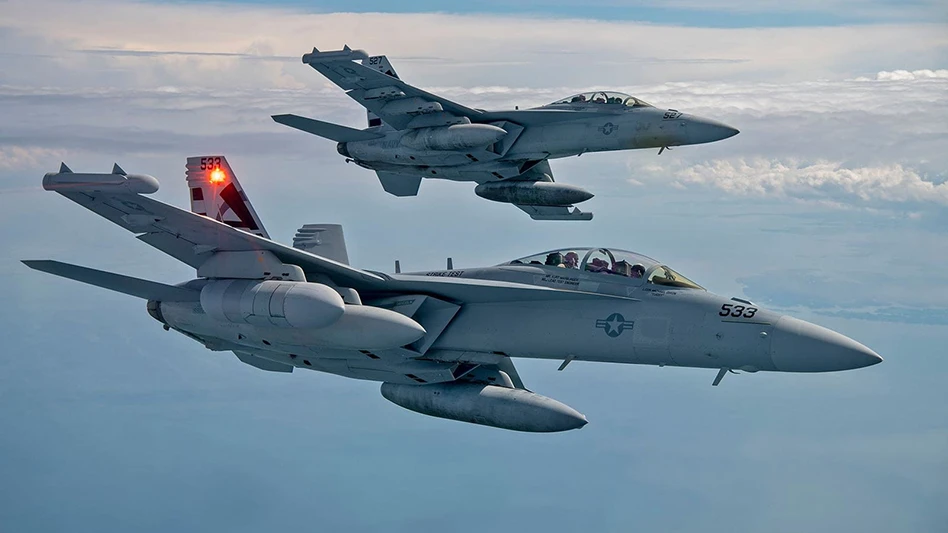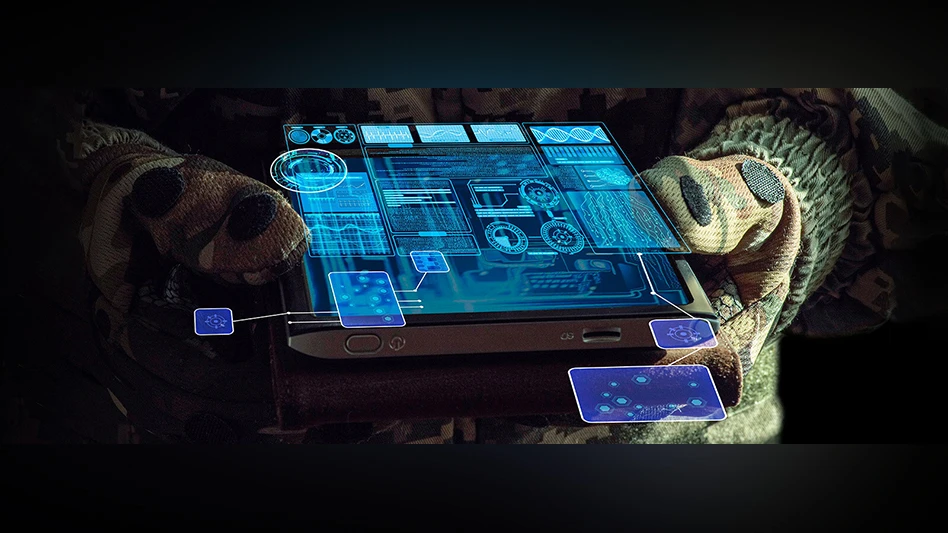
Air Force Master Sgt. Jeffrey Grossi
An important goal of the Defense Advanced Research Projects Agency is developing artificial intelligence that is trustworthy for the Defense Department — particularly for making life-or-death recommendations to warfighters, said Matt Turek, deputy director of DARPA's Information Innovation Office.
AI, machine learning and autonomy are being used by about 70% of DARPA's programs in some form or another, Turek said today at a Center for Strategic and International Studies event.
Another reason AI development is such a priority is to prevent an unexpected breakthrough in technology, or "strategic surprise," by adversaries who might also be developing advanced capabilities, he said, adding that DARPA also aims to create its own strategic surprise.
To accomplish those goals, DARPA is looking for transformative capabilities and ideas from industry and academia, Turek said.
 Screen capture of Matt Turek, deputy director of the Defense Advanced Research Projects Agency’s Information Innovation Office, speaking at a Center for Strategic and International Studies event on "The DARPA Perspective on AI and Autonomy at the Defense Department.”
Screen capture of Matt Turek, deputy director of the Defense Advanced Research Projects Agency’s Information Innovation Office, speaking at a Center for Strategic and International Studies event on "The DARPA Perspective on AI and Autonomy at the Defense Department.”
One of the many ways the agency gets these capabilities and ideas is to hold various types of challenges where teams from the private sector can win prizes worth millions of dollars, he said.
An example of that, he said, is DARPA's Artificial Intelligence Cyber Challenge, which uses generative AI technologies — like large language models — to automatically find and fix vulnerabilities in open-source software, particularly software that underlies critical infrastructure.
Large language models involve processing and manipulating human language to perform such tasks as secure computer coding, decision-making, speech recognition and making predictions.
Turek said a unique feature of this challenge is the partnership between DARPA and state-of-the-art large language model providers that are participating in the challenges, including Google, Microsoft, OpenAI, and Anthropic.
Most likely, large language model improvements will also benefit the commercial sector, as well as DOD, Turek said.
An example of the use of autonomy and of AI that DARPA has been testing with the Air Force involves its F-16 fighter jets, he said.
 An XQ-58A Valkyrie launches for a test mission at Eglin Air Force Base, Fla., Aug. 22, 2023. Artificial intelligence algorithms, developed and trained by the Air Force Research Laboratory’s Autonomous Air Combat Operations, were integrated into the XQ-58A. Photo courtesy of Air Force 2nd Lt. Rebecca Abordo.
An XQ-58A Valkyrie launches for a test mission at Eglin Air Force Base, Fla., Aug. 22, 2023. Artificial intelligence algorithms, developed and trained by the Air Force Research Laboratory’s Autonomous Air Combat Operations, were integrated into the XQ-58A. Photo courtesy of Air Force 2nd Lt. Rebecca Abordo.
Turek said DARPA has four areas of AI research involving industry and academia partners:
1. Proficient artificial intelligence;
2. Confidence in the information domain, which includes tools that detect things like manipulated media;
3. Secure and resilient systems; and
4. Defensive and offensive cyber tools.
Turek noted there's a lot of synergy across those four areas.
Latest from Defense and Munitions
- Best of 2024 - #9 Most Read Article from Defense and Munitions Magazine
- Best of 2024 - #9 Most Read News Story from Defense and Munitions Online
- Best of 2024 - #10 Most Read Article from Defense and Munitions Magazine
- Best of 2024 - #10 Most Read News Story from Defense and Munitions Online
- Air Industries Group secures $11 million US Navy contract for landing gear assemblies
- Booz Allen and Palantir partner to boost U.S. defense
- BAE Systems awarded $2.5 billion in contracts with Denmark and Sweden for new CV90 combat vehicles
- Hive secures DOD contract for deepfake detection





